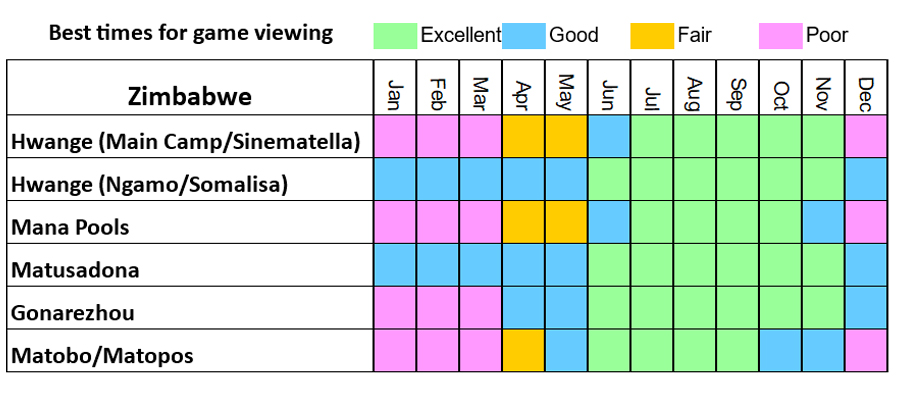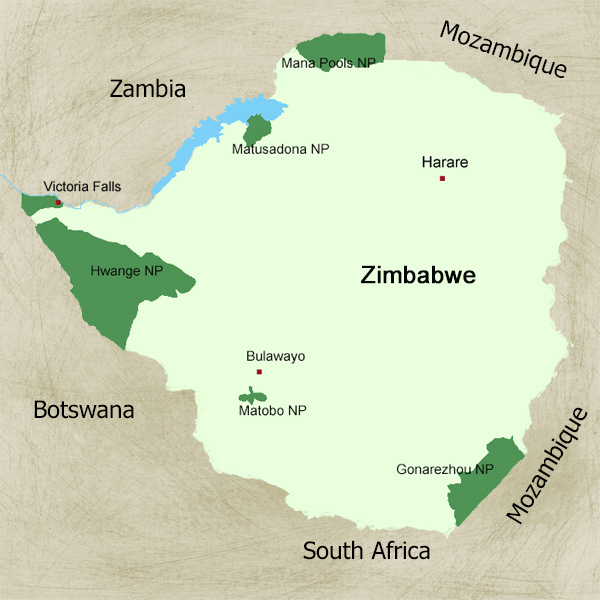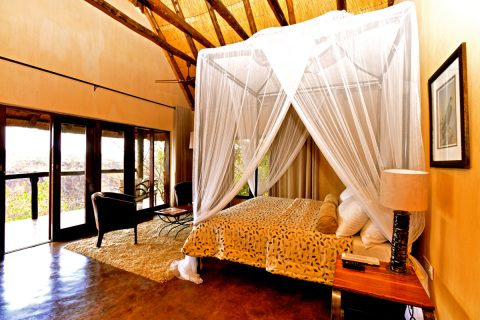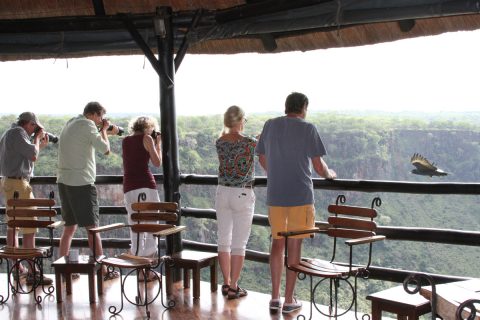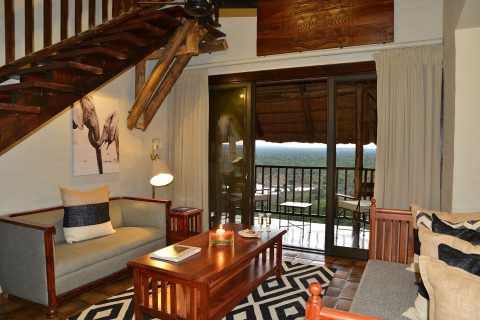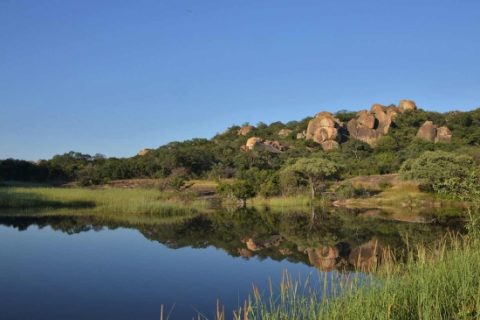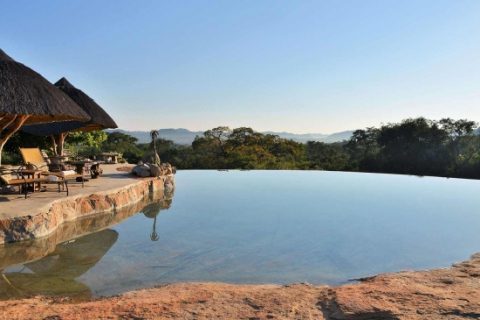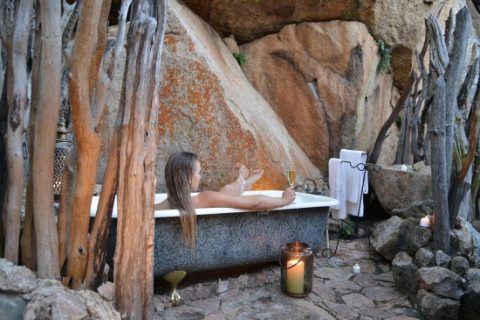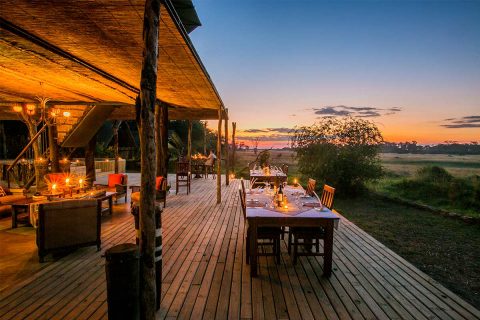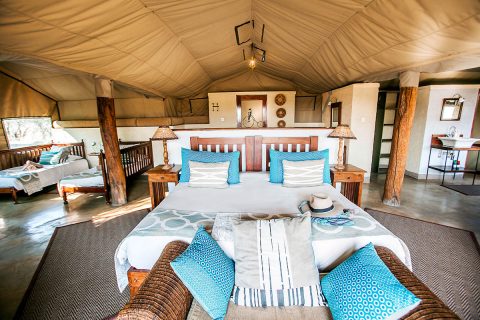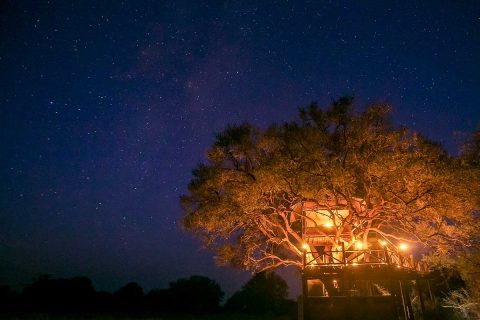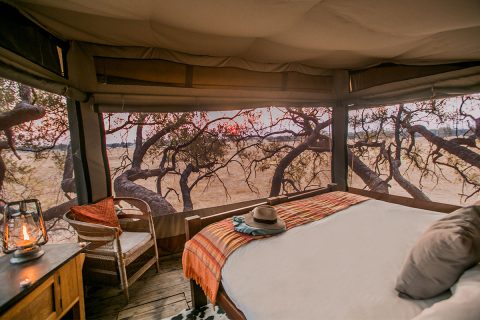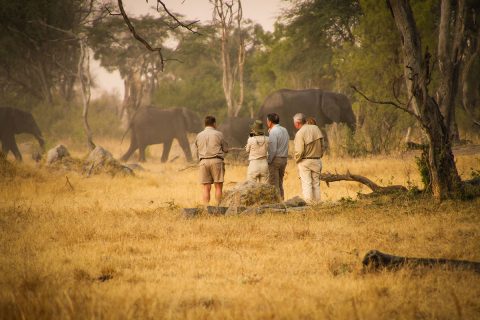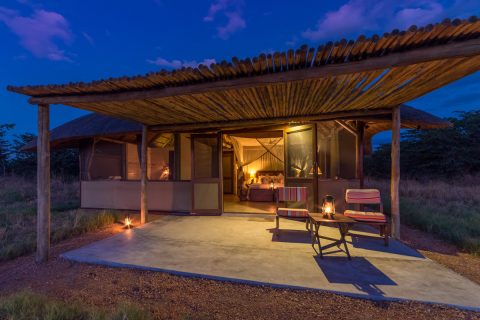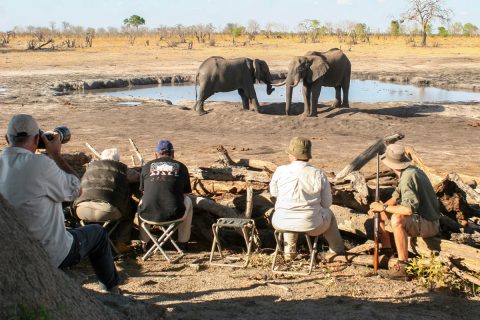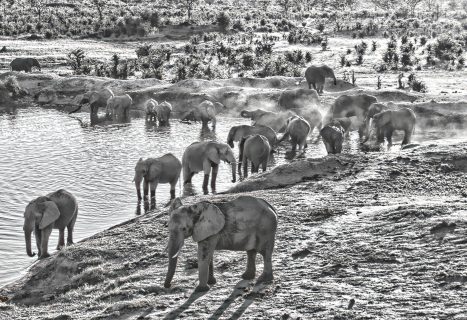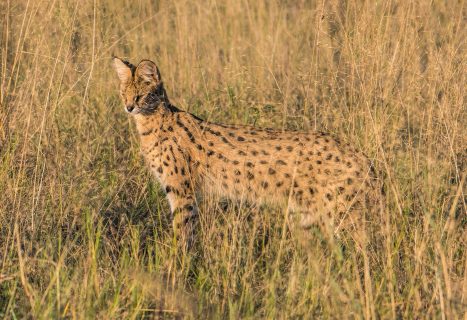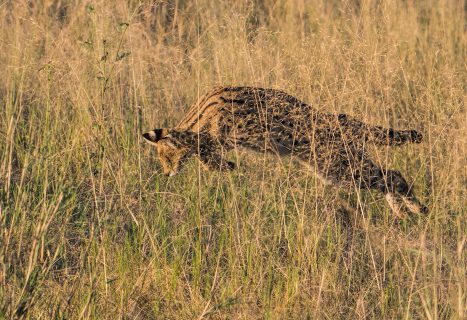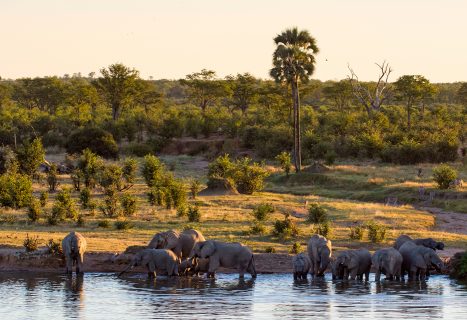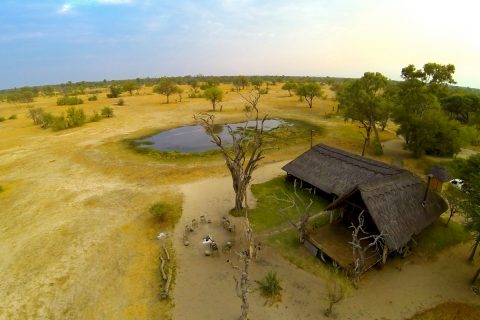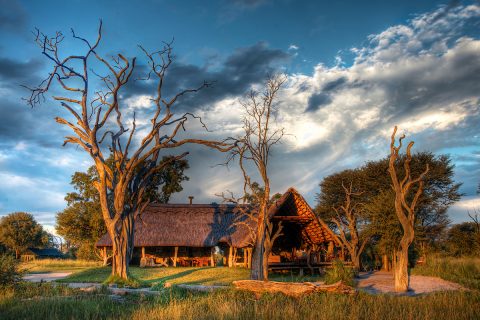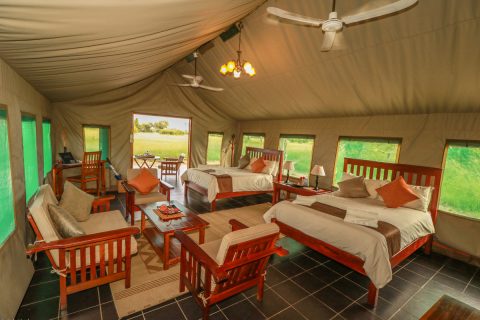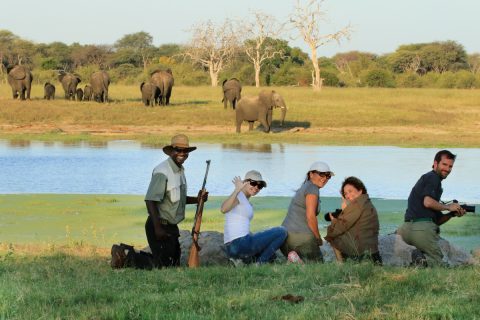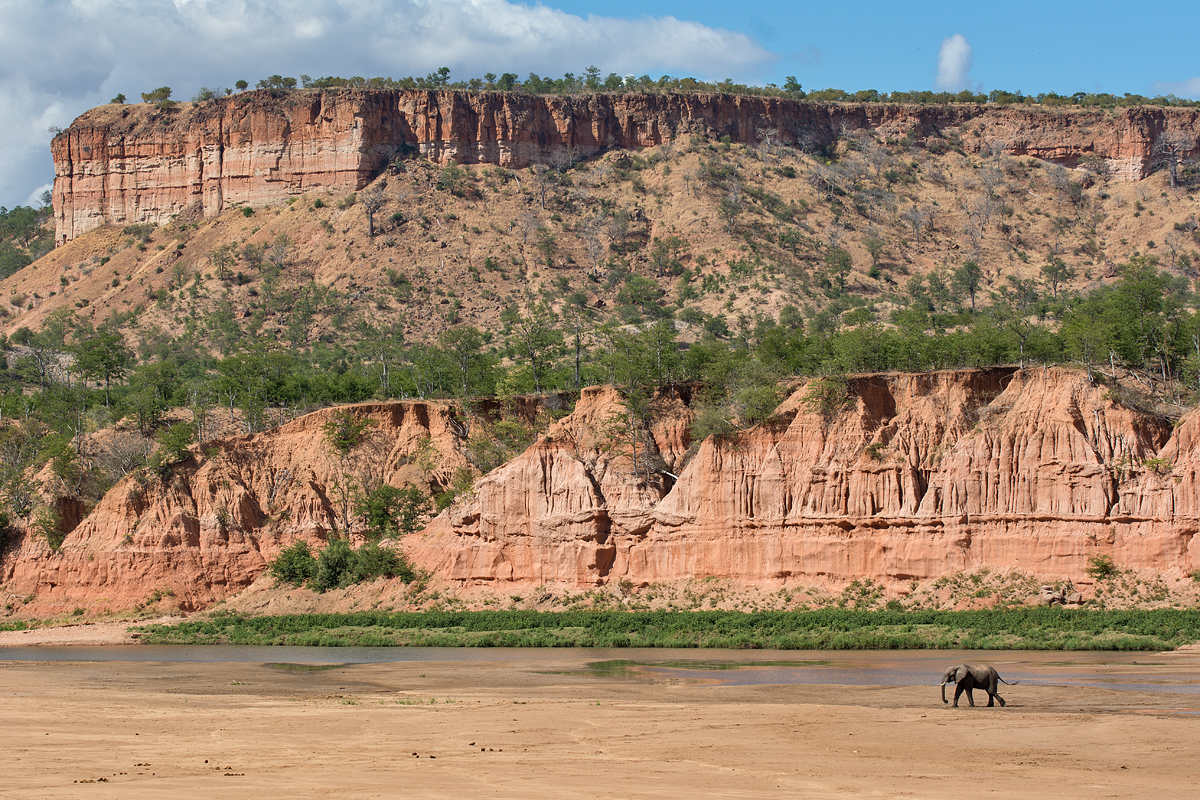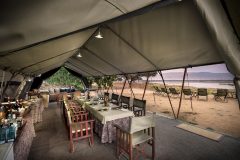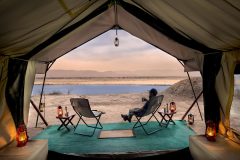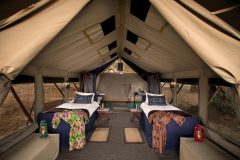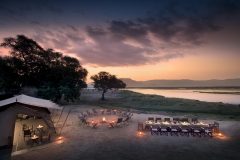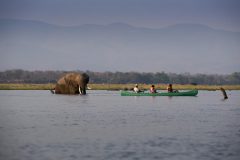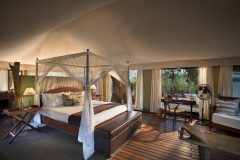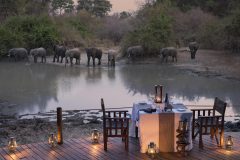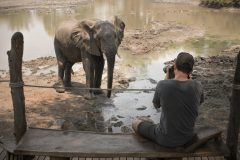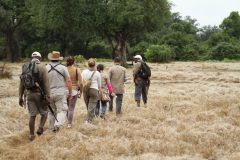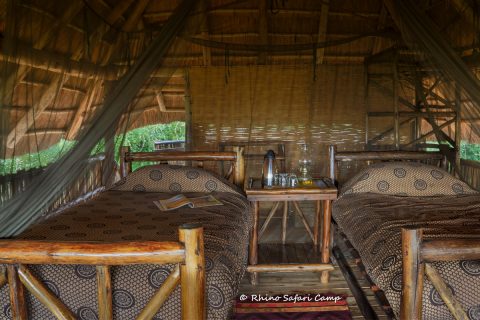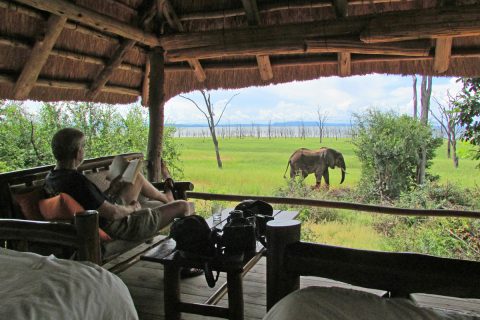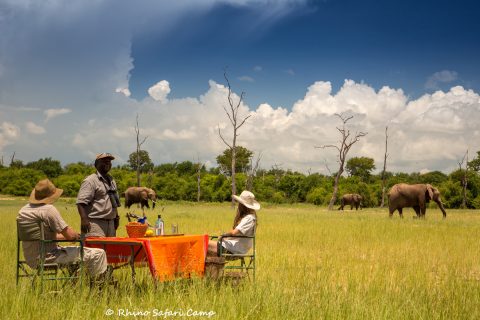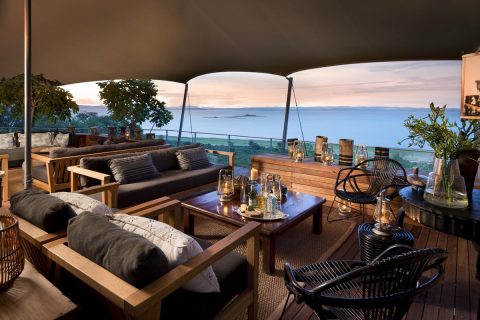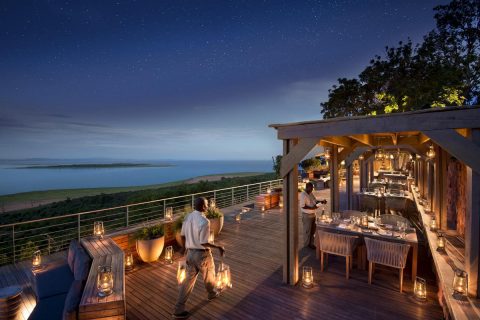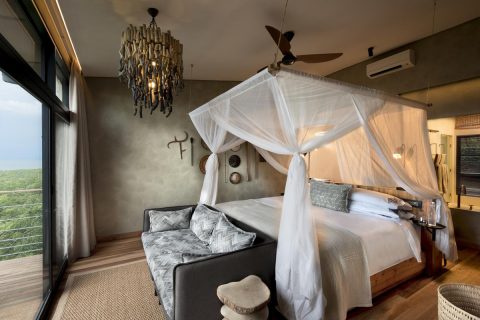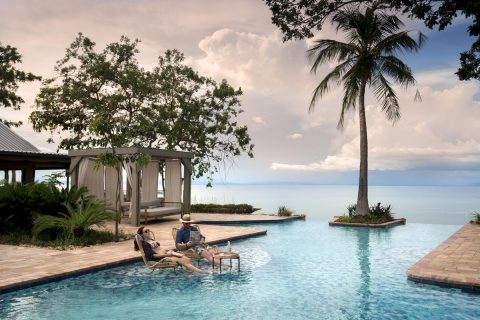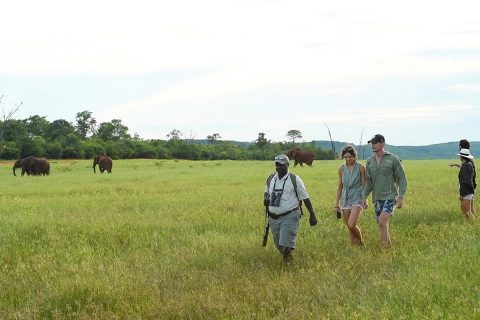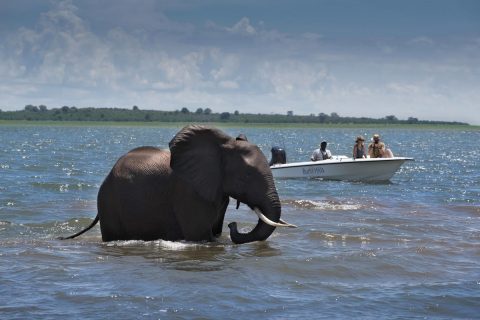Zimbabwe
Zimbabwe has long regarded as one of the best destinations in Africa for lovers of wildlife and wilderness. Even though for a number of years, for political reasons, many people were reluctant to visit it remained a firm favourite with those seeking an authentic African wilderness experience.
The political situation has improved significantly and Zimbabwe now finds itself at the top of many people’s wish list.
The diversity of National Parks is perhaps unmatched by any other destination. In addition to game viewing by vehicle walking safaris are possible in most parks and in Matobo NP you can track rhino on foot.
The Zambezi river offers a wide choice water based activities with canoeing, white water rafting or maybe a relaxing sunset cruise.
Matusadona NP, on the shores of Lake Kariba, is great for both walking and game viewing by boat, whilst Gonarezhou NP, on the border with Mozambique, is one of the very best places to immerse yourself in the bush, combining remoteness with spectacular scenery.
With so much else to talk about, we almost forgot to mention the awe inspiring Victoria Falls. Almost.
Zimbabwe has international airports at Harare and Victoria Falls.
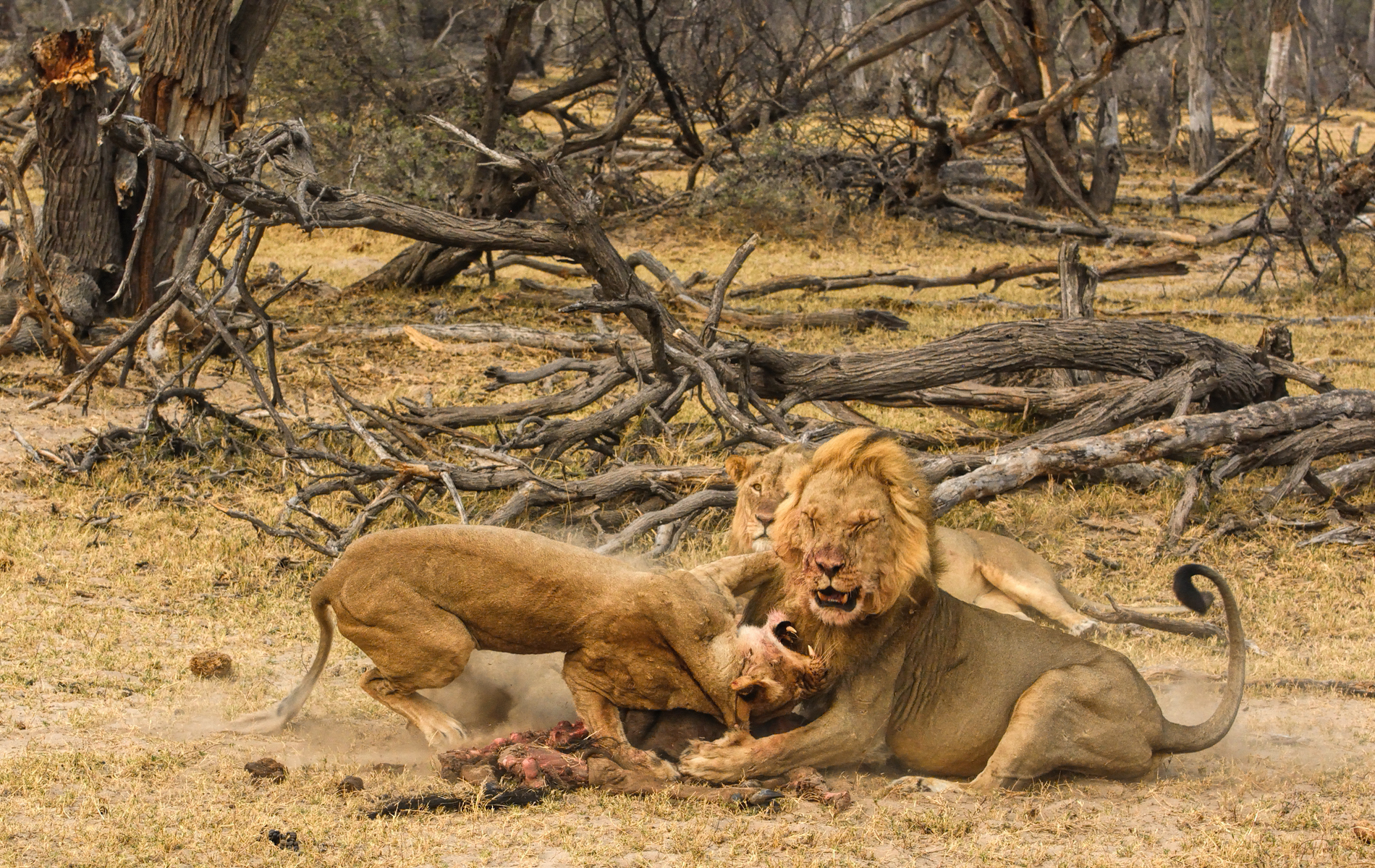

Zimbabwe National Parks
Hwange National Park (formerly Wankie Game Reserve) is the largest game reserve in Zimbabwe and lies in the west, between Bulawayo and Victoria Falls.
Hwange National Park hosts over 100 mammal and 400 bird species and is one of Africa’s finest havens for wildlife and is home to vast herds of elephant, buffalo, zebra and has a very large concentration of giraffe.
All Zimbabwe’s specially protected animals can be found in Hwange and it is the only protected area where gemsbok and brown hyena occur in reasonable numbers.
The population of African wild dogs to be found in Hwange is thought to be of one of the larger surviving groups in Africa today, along with that of Kruger National Park and Selous Game Reserve. Other major predators include lion, leopard, spotted hyena and cheetah.
There is no natural year round permanent source of water in Hwange and the park and its wildlife depend on a system of pumps and pans for their water during the dry season. These pans are the focal point for large congregations of animals and provide many outstanding opportunities for photography.
Due its size, Hwange has many varied landscapes and habitats and it is well worth dividing your stay between 2 camps or lodges located in different areas of the park.
Hwange is easily accessible by road from Victoria Falls and Bulawayo (journey time approx 4 hours). Alternatively there are a number of airstrips for those who prefer to fly in.
An excellent network of internal flights – both scheduled and chartered – makes it easy to combine Hwange with other parks.
It’s proximity to Victoria Falls and Bulawayo means that Hwange can easily be combined with accommodation in Victoria Falls, Zambezi NP and Matobo NP; Chobe NP in Botswana is also easily combined with Hwange.
If you are flying from overseas to visit Hwange the most convenient airport to use is Victoria Falls.
Situated in the magnificent Matopos Hills and covering an area of 44,500 hectares Matobo/Matopos National Park was established in 1953 awarded Unesco World Heritage Status in June 2003.
The Park includes an Intensive Protection Zone where a large population of Black and White Rhinoceros are successfully breeding.
Matobo/Matopos meaning ‘bald heads’ was the name chosen for the area by the great Ndebele King, Mzilikazi. He is buried in the hills just a short distance from the park. The Park is also the site of the grave of Cecil John Rhodes. He is buried at the summit of Malindidzimu -‘ hill of benevolent spirits’. He referred to this hill as having a ‘View of the World’.
The area has great spiritual and cultural significance to the local people and there are many sites within the park where important ceremonies still take place.
The Park is home to a wide variety of animal species including: black and white rhinoceros, zebra, wildebeest, giraffe, kudu, eland, sable, klipspringer, leopard, hyena, cheetah, hippo, warthog, rock dassies, waterbuck, wildcat, springhare, common duiker, crocodiles, baboons and monkeys.
Located close to Bulawayo, Matobo can be easily combined with Hwange NP and Victoria Falls. Other parks can be easily reached using internal flights.
If you are flying from overseas to visit Matobo NP the most convenient airport to use is likely to be Victoria Falls, although Harare can work equally well.
In 1984, Mana Pools became the first national park in Zimbabwe to be designated a UNESCO World Heritage Site.
Mana Pools is a located by the lower Zambezi River in Zimbabwe where the flood plain turns into a broad expanse of lakes after each rainy season. As the lakes gradually dry up and recede, the region attracts many large animals in search of water, making it one of Africa’s most renowned game viewing regions; bursting with a profusion of birds and animals, especially during dry season from June to October.
Four main pools and several smaller pools are scattered along the river course and the cliffs hanging over the river and floodplains provide shelter to a large and varied wildlife population. Long Pool is the largest and extends some 6km in a west to east direction. Lovely big old trees provide a shady canopy with sparse undergrowth. This makes for easy walking and is one of the reasons why this area is perfect for walking safaris.
The park stretches across 2000km² of prime Zambezi riverfront vegetation, much of which is inaccessible except on foot and as a result is completely unspoilt. The landscape includes islands and sandbanks fringed by dense forests of baobabs and indigenous trees, as well as the rugged Zambezi escarpment.
In the south Chitake Springs is of vital importance to the interior of the park as the springs form a crucial source of water as the river systems dry up during the dry season. Wildlife congregate around this precious water resource and walking safaris to the area are intensely exciting and full of action.
Because it offers water based and land activities Mana Pools is a park ideally suited to stays of 4-8 days. Visitors will often divide their time between a camp situated one the banks of the Zambezi and another in the interior of the park.
Visitors can either book a private mobile tented camp, usually economical for groups of 4 or more, or stay in one of the more established camps.
Although Mana Pools NP can be reached by road, most visitors find it more convenient to fly into one of the park’s airstrips. We make use of charter flights to link Mana Pools with other parks in Zimbabwe.
If you are flying from overseas to visit Mana Pools the most convenient airport to use is Harare.
Victoria Falls and Zambezi National Parks are situated on the western tip of Zimbabwe.
The Falls, known by the local Kololo tribe as Mosi oa Tunya- The Smoke that thunders, is one of the “Seven Wonders of the World” and while it is neither the highest nor the widest waterfall in the world, it is classified as the largest, based on its width of 1,708 metres (5,604ft)and height of 108 metres (354ft) resulting in the world’s largest sheet of falling water.
As well as the natural wonder of the falls itself, the town of Victoria Falls is renowned as a centre for activities like white water rafting, Zambezi sunset cruises, helicopter flights and bungy jumping.
The area around Victoria Falls, in particular the Batoka Gorge, is very good for bird life.
Victoria Falls has an International Airport and is one of the main entry points into Zimbabwe, giving easy access to Hwange NP.
It is also a good access point for Chobe NP which is only a short distance away, across the border in Botswana.
Matusadona is a game reserve in northern Zimbabwe that boasts a unique combination of pristine and rugged wilderness, together with the water frontage on Lake Kariba.
It is one of the last remaining sanctuaries of the endangered black rhinoceros and is commonly recognized as having the second largest concentration of wild lions in Africa after Tanzania’s Ngorongoro Crater.
Relatively poor accessibility by road and extremely harsh internal network of roads keep the crowds and traffic low. It can be reached more easily by boat from Kariba and by light aircraft.
Many of the animals rescued during Operation Noah, when Lake Kariba was filling (following the construction off the Kariba Dam) were released into Matusadona, which now holds strong populations of most mammals occurring in the Zambezi valley. Buffalo are especially prominent and herds of up to 1,000-strong often congregate along the shoreline in the dry season.
Matusadona is an ideal place to get out of your game vehicle. As well as being popular for foot safaris one of the real highlights of any visit is the chance to take a boat safari on the lake; giving you a wonderful viewpoint from which to enjoy the wildlife and, especially, the prolific bird life.
Because the accommodation we use at Matusadona is located either on the lake shore or on an island, the most convenient way to reach Matusadona is by charter flight. In some cases, after arriving at the airstrip you will be transferred by boat to your accommodation.
If you are flying from overseas to visit Matusadona the most convenient airport to use is Harare.
Located in south-eastern Zimbabwe, Gonarezhou is the country’s second largest national park (5,053km²) after Hwange and also one of the country’s least visited.
Its habitat features beautiful spreads of mahoganies, ironwoods and tall acacia albida trees, amongst which the bird-life is prolific, particularly after the rains. The game-viewing is good, but it is the sense of being in a truly unspoilt wilderness that draws visitors.
One of the park’s outstanding highlights is the impressive red sandstone Chilojo Cliffs.
Gonarezhou borders onto South Africa’s Kruger National Park and Mozambique’s vast Limpopo National Park. Together these three huge parks go to make up a truly vast wild area known as the The Great Limpopo Transfrontier Park covering around 35,000km², an area similar to the size of the Netherlands.
Gonarezhou is one of Africa’s last remaining pristine wildernesses; the animals are in their most natural state at Gonarezhou, these are no lazy photographic models. This is a country of red sandstone, thorny scrub and baobabs. Buffalo gather at watering holes, big cats prowl silently in pursuit of painted impala, hippo wallow midstream attended by squadrons of fluttering birds. The presence of elephants is everywhere; on the earth and the vegetation, as their families travel along routes passed from one matriarch to another in search of food, safety, and water. A panorama of birdlife gathers at Tembahata and Machanu Water Pans, a flying, wading tumult of colour, while the wonders of Chilojo Cliffs and Chivilila Falls reveal the glories of the unique landscape.
It is possible to reach Gonarezhou by road, but the drive is long and the road is rough so most of our clients choose to fly in to either Mahenye or Chipinda airstrip.
If you are flying from overseas to visit Gonarezhou the most convenient airport to use is Harare, as charter flights from here to Gonarezhou are generally cheaper than those from Bulawayo or Victoria Falls.
Recommended lodges & camps
Victoria Falls
Gorges Lodge
Gorges and Little Gorges is a mere 30 minute drive from Victoria Falls town and offers a unique Victoria Falls experience from a peaceful and idyllic base on the edge of the Batoka Gorge – a great place to stay for visiting Victoria Falls and as the start point for your safari adventure.
Gorges is famous for its spectacular views, described by some as the best in southern Africa; whether you are enjoying a cup of coffee at sunrise on your private veranda or a cool refreshment by the pool at sunset, you will be constantly drawn to the stunning vistas provided by the Batoka Gorge and the rushing waters of the Zambezi River below.
Victoria Falls Safari Lodge
The sunset-facing Victoria Falls Safari Lodge overlooks the African bushveld, which includes a waterhole frequented by elephants, buffalo and kudu. Guests may enjoy the breath-taking view from their rooms, MaKuwa-Kuwa Restaurant, The Buffalo Bar or the swimming pool.
Victoria Falls Safari Lodge is built of thatch and timber and rises several levels, giving the impression of a vast open-plan tree house, with all rooms facing out towards the Zambezi National Park. All rooms have sliding glass doors opening onto a private balcony.
Note: this is a large lodge with 72 rooms.
Buffalo Bar
Included on Heineken’s “Great Bars of the World” list, it is the best spot in Victoria Falls to enjoy a sundowner as you soak up the spectacular views of an African sunset and the lodge’s wildlife-rich waterhole.
Matobo Hills
Amalinda Lodge
Seamlessly integrated into the rocks and kopjes of of the Maotobo Hills, Amalinda Lodge has to be one of the most unique places you can stay in Africa. This exclusive, privately owned safari lodge is located in the UNESCO World Heritage Site of the Matobo Hills, the oldest National Park in Zimbabwe, tucked away into an ancient Bushman’s shelter.
The granite domes and castle kopjes echo the essence of tranquillity and majesty of untamed Africa, where wildlife and birdlife species thrive in prolific numbers.
Famous for its healthy population of endangered rhino – which you can experience the thrill of tracking on foot – the area is one of the most sought after destinations within Zimbabwe.
Hwange National Park

The Hide
The Hide has set a bar of excellence and luxury for Hwange National Park accommodation and is consistently voted as one of the “Best Safari Lodges” in Zimbabwe. Located in a prime position in the Park, The Hide offers its guests fantastic game viewing right on your doorstep; a variety of daily activities to suit everyone and welcoming staff, who make you feel like family from the minute you arrive.
The Hide sleeps up to 20 guests in ten comfortable and spacious deluxe, family deluxe and honeymoon deluxe tents. The tents have a myriad of different configurations with indoor and/or outdoor bathtubs and showers. They are fan cooled for your comfort in summer and have extra warm blankets and hot water bottles for the cool winter months. Each has a private veranda from where guests may be entertained by the comings and goings of a large variety of game at the waterhole.
The Dove’s Nest
Overlooking the open tree-lined vlei and pan where giraffe and elephants come down to drink, The Doves Nest provides you with a romantic African fairytale setting, where you can sleep out in the vast openness of the wild and immerse yourself in the sights and sounds of the bush that surround you.
There is something quite special about the wide expanse of the African sky and with just the stars, moon and occasional call from the wild, to keep you company, you are in for a treat for your sleep out at The Hide.
There is no extra charge for your sleep-out in The Dove’s Nest but it is subject to availability and should be booked in advance.
Camp Hwange
Camp Hwange reverts back to the concept the original safari, where activities centred on being immersed in the wild, walking being the main activity. During walks with well trained and experienced guides you will track and follow some of the most feared animals of Africa, secure in the knowledge that your guides and trackers are competent in all aspects of this exciting adventure.
Camp Hwange has 8 chalets overlooking a permanent waterhole. Each chalet is furnished with stylish simplicity and has en-suite bathroom facilities. The chalets enjoy clear views of the waterhole so that if you wish you may observe the animals in Africa, in their natural habitat from the privacy of your own space.
Images from our recent stay at Camp Hwange
Bomani Tented Lodge
If you are looking for an exciting safari destination – in a remote and exclusive area – with great game viewing all year round, and one that actually makes a difference to the local communities and wildlife, then you need look no further than Bomani.
Situated on a 5000 acre private reserve within the Ngamo Forest Area Bomani is just 1 hour by plane / 4 hours by road from Victoria Falls or Bulawayo. Alternatively you can transfer by road to Dete and then take the Elephant Express rail car.
All the tents have a private en-suite bathroom, hot running water and electricity by diesel/solar generator.
Friendly and knowledgeable guides will take you on walks or drives inside this wild and remote region of Hwange National Park where you can expect to see lions, cheetahs, as well a large herds of elephant and buffalo.
Gonarezhou National Park

Chilo Gorge Safari Lodge
Chilo Gorge Safari Lodge has been designed to bring the outside in; the lodge is light and spacious, simple and elegant, yet with all the comforts of home, to provide you with a haven from the heat of the day, a place to rest and recoup, and to prepare for your next big adventure.
The great African wilderness is never far away. You can watch elephants, hippos and crocodiles cooling off in the waters of the river from the viewing deck.
Luxurious guest rooms sleep two and comes with a spacious en-suite bathroom. A private balcony and seating area commands superior views over the river and the park opposite.
Chilo Gorge Tented Camp
An intimate camp overlooking the floodplains of the Runde River, comprising 4 large A-frame tents, configured as twin rooms, each with a private en-suite ‘bathroom’.
Meals are enjoyed under the cool shade of a Nyala berry, but there is also a mess tent if the weather is inclement.
It provides a wonderful location from which to do game walks and is located close by to a number of the best water pans in Gonarezhou.
Chilo Gorge Tented Camp combines well with a few nights at the lodge.
Mana Pools National Park
Zambezi Expeditions
An exclusive mobile camp overlooking the majestic Zambezi river, Zambezi Expeditions showcases one of the most magnificent settings in Mana Pools National Park.
Comfortable yet classic, the camp offers the kind of intimacy with nature that can only be achieved by immersing yourself in the heart of the wild.
Set under the shade of winter thorn and ebony trees, each tent has en-suite bathroom facilities.
With unique access to the Zambezi River, your days will be filled with adventurous canoeing safaris, tracking game along the shorelines by foot, and fishing for the iconic tiger fish. An absolute must, however, is a game drive in an open 4×4 along the flood plains and into the heart of the Mana Pools UNESCO World Heritage Site.
Kanga Camp
Situated within a private concession in Mana Pools NP, Kanga Camp is a completely untouched wilderness paradise offering an unspoiled and authentic safari experience away from the traditional riverside camps of Mana Pools National Park.
Apart from the Zambezi River many miles away, Kanga Pan is a sole source of water in dry season, and draws the wildlife right to your doorstep.
The camp comprises of six tents all raised on a wooden platform for an elevated view over the Kanga Pan. All tents are complete with en suite bathroom, flushing toilet, outdoor showers, hot running water and a secluded veranda.
Lots of guests don’t even bother with game drives, preferring to relax under the shade of a mahogany tree and soak in the uninterrupted views of Kanga Pan’s hyperactive watering hole – the perfect “armchair safari”.
Matusadona National Park / Lake Kariba

Rhino Safari Camp
Rhino Safari Camp is a small rustic safari camp set in a wild and remote area within the Matusadona National Park on the shores of Lake Kariba.
Hosting a maximum of fourteen guests in seven twin bedded rooms, our guests are offered a highly personalised safari experience that blends comfort and wildness. We are a permanent camp open year round.
The emphasis is on providing guests with their creature comforts without losing touch with the natural surroundings. Rooms are elevated wooden platforms with extended thatched roofs with comfortable twin beds, private bathroom and magnificent views of the lake.
Game activities include game drives, game walks and cruises on the lake.
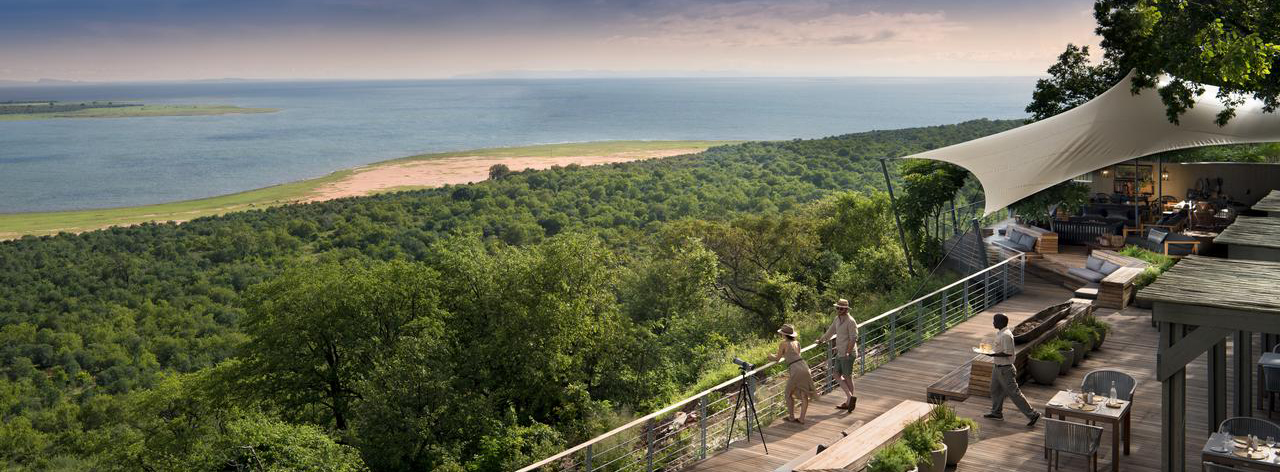
Bumi Hills Safari Lodge
Set on a range of remote hills in one of Zimbabwe’s finest wilderness locations, Bumi Hills Safari Lodge is utterly captivating. With the Zambezi escarpment as its backdrop, this haven of serenity overlooks the eternal shimmering waters of Lake Kariba below. Not only is Kariba’s shoreline wildlife-rich, but the lodge’s proximity to Matusadona makes for endless game-viewing opportunities on a luxury safari, all led by our passionate team of guides.
Each of the ten stylish suites boasts spectacular views over the lake and its surrounds. A truly immersive Zimbabwe wildlife experience, you will wake to the sound of birdcalls echoing across the water and uninterrupted vistas of the lake.
With the lake as your playground, spend your days cruising on the water or meandering the surrounds on a walking safari. Venture deeper into the bush in search of fossilised dinosaur footprints or go on an enthralling game drive in search of the Matusadona lions.


